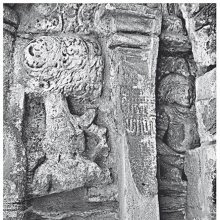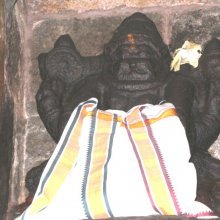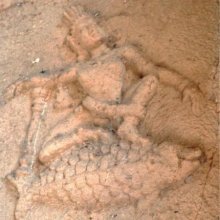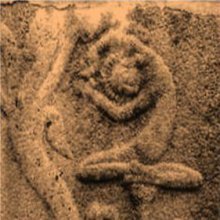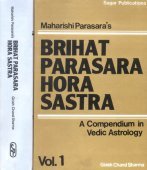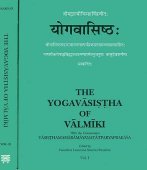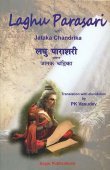Yoga, Yogā: 65 definitions
Introduction:
Yoga means something in Buddhism, Pali, Hinduism, Sanskrit, Jainism, Prakrit, the history of ancient India, Marathi, Hindi. If you want to know the exact meaning, history, etymology or English translation of this term then check out the descriptions on this page. Add your comment or reference to a book if you want to contribute to this summary article.
Alternative spellings of this word include Yog.
Images (photo gallery)
(+36 more images available)
In Hinduism
Jyotisha (astronomy and astrology)
Source: Wisdom Library: JyotiṣaYoga (योग) refers to the time during which the sun and the moon together accomplish 13 degrees and 20 minutes of space. The term is used throughout Jyotiṣa literature.
Source: WikiPedia: Hindu AstrologyYoga (योग, “union”) is a combination of planets placed in a specific relationship to each other.
- Rāja Yogas are givers of fame, status and authority,
- Dhana Yogas are formed by the association of wealth-giving planets,
- Sanyāsa Yogas are formed due to the placement of four or more Grahas, excluding the Sun, in a Keṅdra Bhāva from the Lagna.
There are some overarching Yogas in Jyotiṣa such as Amāvasyā Doṣa, Kāla Sarpa Yoga-Kāla Amṛta Yoga and Graha Mālika Yoga that can take precedence over planetary placements in the horoscope.
Source: Wikibooks (hi): Sanskrit Technical TermsYoga (योग).—1. An interval of time during which the combined motions of the Sun and Moon add up to 13° 20'; (lit., sum) 2. Conjunction in longitudes of two heavenly bodies. 3. Addition. Note: Yoga is a Sanskrit technical term used in ancient Indian sciences such as Astronomy, Mathematics and Geometry.

Jyotisha (ज्योतिष, jyotiṣa or jyotish) refers to ‘astronomy’ or “Vedic astrology” and represents the fifth of the six Vedangas (additional sciences to be studied along with the Vedas). Jyotisha concerns itself with the study and prediction of the movements of celestial bodies, in order to calculate the auspicious time for rituals and ceremonies.
Dharmashastra (religious law)
Source: Wisdom Library: Dharma-śāstraYoga (योग) is a Sanskrit technical term, used in law, referring to either “fraud” or “deceit”. The word is used throughout Dharmaśāstra literature such as the Manusmṛti. (See the Manubhāṣya, verse 8.165)
Source: Google Books: Manusmṛti with the ManubhāṣyaYoga (योग) is explained as ‘fraud’ in Vyavahāramayūkha (p. 90); which adds that the king shall nullify every transaction in connection with which he detects some fraud. ‘Fraud’ is deceit; when a certain thing has been mortgaged fraudulently,—i.e., when it is found that it has been done in an improper manner,—then the king shall ‘nullify it’. (See the Manubhāṣya, verse 8.165)

Dharmashastra (धर्मशास्त्र, dharmaśāstra) contains the instructions (shastra) regarding religious conduct of livelihood (dharma), ceremonies, jurisprudence (study of law) and more. It is categorized as smriti, an important and authoritative selection of books dealing with the Hindu lifestyle.
Purana and Itihasa (epic history)
Source: archive.org: Puranic Encyclopedia1) Yoga (योग).—A sage who was the grandson of Svāyambhuva Manu and son of Śraddhā. Yoga was born to Śraddhā by Dharma. (Bhāgavata, 4th Skandha). (See full article at Story of Yoga from the Puranic encyclopaedia by Vettam Mani)
2) Yoga (योग).—It is Jñāna that reveals Brahman. Yoga is the concentration on Brahman. Agni Purāṇa, Chapter 372, mentions that Yoga is the perfect union of Jivātmā and Paramātmā.
2) In fact Yoga is activity with the body as its basis. It may be doubted how a mere physical karman helps Parabrahmadārśana. But Maharṣis assert that there is an inseparable connection between matter and soul.
Source: Cologne Digital Sanskrit Dictionaries: The Purana Index1a) Yoga (योग).—Practices of:1 eight-fold: its characteristics.2 Bhaktiyoga:3 born of Kriya, Kriyāyoga:4 the course of: followed by Nārada and others in their worship of Nārāyaṇa:5 System of.6 Also three-fold jñāna, bhakti and karma of this bhakti is important.7 Spoiled by bad association, especially association of women;8 is an aiśvarya, and possible through kriya and gurupriya: of 24 truths: trayī is its limb;9 other limbs, yama, niyama,10 yajña, dāna, vedābhyāsa, and dhāraṇa; philosophy of;11 the strength of the Pitṛs, out of which soma grows; from jñāna;12 methods of: control of the senses and the mind by fasting; a means to fructify austerities, then knowledge sprouts;13 praise of;14 of Nakṣatra and Ṛṣi;15 as a result of svādhyāya or study and vice-versa;16 explanation of the nature of yoga by Keśidhvaja to Khāṇḍikya.17
- 1) Bhāgavata-purāṇa I. 2. 28; II. 1. 6; 2. 23; Matsya-purāṇa 1. 12.
- 2) Bhāgavata-purāṇa III. Ch. 28.
- 3) Ib. III. Ch. 29.
- 4) Ib. IV. 1. 51; Vāyu-purāṇa 71. 64.
- 5) Bhāgavata-purāṇa V. 14. 45; 19. 10; VII. 3. 9; 11. 3.
- 6) Ib. IX. 12. 4; X. 8. 45; Ch. 29 (whole) ; XI. 14. 20.
- 7) Ib. XI. 20. 6-8.
- 8) Ib. XI. 26. 3 and 24.
- 9) Brahmāṇḍa-purāṇa II. 34. 65; III. 3. 89; 9. 62 and 66; 10. 4 and 115; 19. 29 and 62; IV. 3. 55.
- 10) Matsya-purāṇa 13. 5; 183. 44 and 50; 193. 38; 247. 9; 248. 17.
- 11) Ib. 2. 16; Vāyu-purāṇa 66. 110.
- 12) Ib. 71. 66; 101. 75, 211, 350.
- 13) Ib. 77, 124-35.
- 14) Brahmāṇḍa-purāṇa I. 6. 40; Vāyu-purāṇa 18. 5-6.
- 15) Ib. 99. 422.
- 16) Viṣṇu-purāṇa VI. 6. 2.
- 17) Ib. VI. 7. 26-92.
1b) A name of Śiva.*
- * Vāyu-purāṇa 97. 175.
2) Yogā (योगा).—A Śakti.*
- * Brahmāṇḍa-purāṇa IV. 32. 17.

The Purana (पुराण, purāṇas) refers to Sanskrit literature preserving ancient India’s vast cultural history, including historical legends, religious ceremonies, various arts and sciences. The eighteen mahapuranas total over 400,000 shlokas (metrical couplets) and date to at least several centuries BCE.
Shaivism (Shaiva philosophy)
Source: Wisdom Library: ŚaivismYoga (योग) is the tradition (ovallī) founded by Vṛddhanātha, who was one of the twelve princes born to Kuṃkumā, consort to Mīnanātha, who is the incarnation of Siddhanātha in the fourth yuga, belonging to the Pūrvāmnāya (‘eastern doctrine’) tradition of Kula Śaivism, according to the Ciñcinīmatasārasamuccaya. Siddhanātha incarnates as a Kaula master in each of the four yugas. Vṛddhanātha was one of the six princes having the authority to teach.
Source: McGill: The architectural theory of the Mānasāra (shaivism)1) Yoga (योग).— The word yoga, the basic meaning of which is “yoking, uniting”, a1so derives from the same verb-root, √yuj, “to yoke, conjoin”. In the religious-spiritual sphere, its meaning obtains in the sense of meditation, concentration of the mind, and techniques pertaining to them. In the first two states of sālokya and sāmīpya, because there are present both more than one disposition (among bhakti, jñāna and vairāgya) as well as the duality between subjective disposition and its abject, yoga as the exercise of purposeful uniting of these is imperative.
In the third state of sārūpya, even though there is only dhyāna, the subject-object duality persists; hence, here too yoga is needed. What is most significant, though, is that yoga is extended iuto the realm of sāyūjya as well, where there is only non-duality.
2) Yoga (योग, “meditation”) or yogapada refers to the third division of the āgamas.—The four classes of devotees (bhakta) or the states of spiritual life somewhat correspond to the four divisions of the Āgamas and the four modes of sādhana, spiritual practice, they entail. Thus, sālokya corresponds to carya, ritual and moral conduct, sāmīpya to kriyā, architectural and iconographic making, sārūpya to yoga, meditation, and sāyūjya ta jñāna, theology and gnosis.
Source: academia.edu: The Yoga of the MālinīvijayottaratantraYoga (योग).—The Mālinīvijayottara itself specifies that yoga is the topic of its teachings. In its narrative framework, it is the seer’s query about the practice of yoga that presents Skanda with the opportunity to transmit śiva’s revelation to the eight sages. The section establishing the pedigree of the Mālinīvijayottara as a new revelation lineally descended from the Siddhayogeśvarīmata plainly states that the Mālinīvijayatantra, the immediate precursor of the Mālinīvijayottara, taught yoga.
Source: Brill: Śaivism and the Tantric TraditionsYoga (योग) or “meditation” refers to one of the four categories of the subject-matter of the Āgamas, according to Alexis Sanderson in his 2006 article on the Lākulas (before presenting the vratas in the ninth chapter of the caryāpāda of the Mataṅgapārameśvara).—The Śaivas have conventionally divided the means of liberation taught in the Āgamas, that is to say their subject matter, into the four categories, ritual (kriyā), doctrine or gnosis (jñāna, vidyā), meditation (yoga), and ascetic observance and other rules governing the conduct of the various classes and kinds of initiate (caryā).

Shaiva (शैव, śaiva) or Shaivism (śaivism) represents a tradition of Hinduism worshiping Shiva as the supreme being. Closely related to Shaktism, Shaiva literature includes a range of scriptures, including Tantras, while the root of this tradition may be traced back to the ancient Vedas.
Arthashastra (politics and welfare)
Source: Wisdom Library: ArthaśāstraYoga (योग) refers to “suggestion of similar facts” and is the name of a yukti, or ‘technical division’, according to which the contents of the Arthaśāstra by Cāṇakya are grouped. Cāṇakya (4th-century BCE), aka Kauṭilya, was the chief minister of Chandragupta Maurya, the founder of the famous Maurya Empire.

Arthashastra (अर्थशास्त्र, arthaśāstra) literature concerns itself with the teachings (shastra) of economic prosperity (artha) statecraft, politics and military tactics. The term arthashastra refers to both the name of these scientific teachings, as well as the name of a Sanskrit work included in such literature. This book was written (3rd century BCE) by by Kautilya, who flourished in the 4th century BCE.
Pancaratra (worship of Nārāyaṇa)
Source: Wisdom Library: PāñcarātraYoga (योग) refers to an aspect of nṛsiṃha (‘man-lion’), according to the Vihagendra-saṃhitā 4.17, which mentions seventy-four forms (inlcuding twenty forms of vyūha). He is also known as Yoganṛsiṃha or Yoganarasiṃha. Nṛsiṃha is a Tantric deity and refers to the furious (ugra) incarnation of Viṣṇu.
The 15th-century Vihagendra-saṃhīta is a canonical text of the Pāñcarātra corpus and, in twenty-four chapters, deals primarely with meditation on mantras and sacrificial oblations.
Source: archive.org: A History of Indian Philosophy (pancaratra)Yoga (योग).—Thus Ahirbudhnya-saṃhitā describes yoga as the worship of the heart (hṛdayārādhana), the offering of an oblation (havi) of oneself to God or self-surrender to God, and yoga is defined as the linking up (saṃyoga) of the lower self (jīvātman) with the higher self (paramātman).
Source: archive.org: Isvara Samhita Vol 1Yoga (योग) or Yogapāda refers to the fourth of four sections (pāda) of the Pāñcarātra system of thought.—Yoga describes not only certain Yogic practices like Prāṇāyāma and dhyāna etc. used in pūjā ceremony but also the method of merging individual consciousness into the Supreme consciousness in the state of complete meditation (samādhi). The best description of all these four aspects of Pāñcarātra (e.g., jñāna) is found in the Padma-saṃhitā, a simplified elaboration of the Jayākhya-saṃhitā.
Source: Shodhganga: Kasyapa Samhita—Text on Visha Chikitsa (p)Yoga (योग) or “meditation” refers to one of the principal topics of the Pāñcarātra division of the Vaiṣṇava Āgamas.—The almighty Hari, out of compassion for mankind in general, felt that the Vedas and Śāstras could not be easily grasped and practised by people belonging the diverse communities and cadres, whose potential and comprehension would vary vastly. Hence, he promulgated the Pāñcarātra doctrine [teaching for example meditation—yoga] which is the essence of the Vedas, in a simplified form.
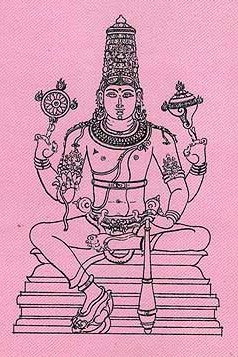
Pancaratra (पाञ्चरात्र, pāñcarātra) represents a tradition of Hinduism where Narayana is revered and worshipped. Closeley related to Vaishnavism, the Pancaratra literature includes various Agamas and tantras incorporating many Vaishnava philosophies.
Vyakarana (Sanskrit grammar)
Source: Wikisource: A dictionary of Sanskrit grammar1) Yoga (योग).—A rule of grammar; the word योग (yoga) in this sense is very frequently found used in the Mahabhasya; cf the frequent statements अयं येगः शक्यो (ayaṃ yegaḥ śakyo)sकर्तुम् (kartum) M. Bh. on P.I.1. 6, 62, etc. or कान्यस्य योगस्य प्रयोजनानि (kānyasya yogasya prayojanāni) M. Bh. on P. I. 1.31 Vart. 6, I.1. 57 etc.;
2) Yoga.—Grammatical connection; cf शास्त्रकृतो योगश्च (śāstrakṛto yogaśca) Nir. I.2; cf also षष्ठी स्थानेयेगा (ṣaṣṭhī sthāneyegā) P.I.1.49.
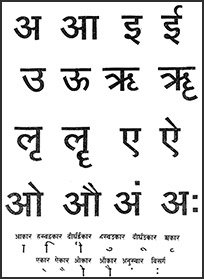
Vyakarana (व्याकरण, vyākaraṇa) refers to Sanskrit grammar and represents one of the six additional sciences (vedanga) to be studied along with the Vedas. Vyakarana concerns itself with the rules of Sanskrit grammar and linguistic analysis in order to establish the correct context of words and sentences.
Ayurveda (science of life)
Rasashastra (Alchemy and Herbo-Mineral preparations)
Source: Indian Journal of History of Science, 31(4), 1996: MūṣāvijñānaYoga (योग) or Yogamūṣā refers to an “combining crucible” and is a type of mūṣā (crucible) used for smelting metals.—This kind of mūṣā was made of burnt chaff, powdered and burnt coals, earth from a place where white ants abound, and a biḍa which is a preparation of various alkalies, acids, salts etc. After constructing this crucible, it was smeared with biḍa on both inner and outer surfaces and then dried well. This mūṣā was used for the cultivation of mercury. It is said that it could render mercury very powerful. Also see the Rasaratnasamuccaya 10.12.
Kalpa (Formulas, Drug prescriptions and other Medicinal preparations)
Source: Ancient Science of Life: Yogaśataka of Pandita VararuciYoga (योग) is a Sanskrit technical term and refers to “drug formulations”.—There was a tradition of writing small books containing drug formulations (yoga) in Ayurveda. They are one kind of handbooks of Ayurvedic treatment. Vaidyas of yore wrote the books of those formulations which they used in their own practice. These books are small having 100 or 300 formulations. Yogaśataka of Pandita Vararuci is an example of this category.
Unclassified Ayurveda definitions
Source: gurumukhi.ru: Ayurveda glossary of terms1) Yoga (योग):—[yogaḥ] A state of meditation : where there is no existence of sensation
2) [yogaḥ] Arrangement or orderly collection; arrangement of sentences by putting the different word and clauses in proper order so as to obtain the correct meaning.
3) [yogaḥ] Union with self here all sensation ceases to exist but in moksha cessation is complete. yoga leads to moksha.

Āyurveda (आयुर्वेद, ayurveda) is a branch of Indian science dealing with medicine, herbalism, taxology, anatomy, surgery, alchemy and related topics. Traditional practice of Āyurveda in ancient India dates back to at least the first millenium BC. Literature is commonly written in Sanskrit using various poetic metres.
Natyashastra (theatrics and dramaturgy)
Source: Wisdom Library: Nāṭya-śāstraYoga (योग) or Saṃyoga refers to a set of three rules used in the playing of drums (puṣkara) [with reference to Mṛdaṅga, Paṇava and Dardura] according to the Nāṭyaśāstra chapter 33.
The following are the three yogas:
- Guru-saṃyoga,
- Laghu-saṃyoga,
- Gurulaghu-saṃyoga,

Natyashastra (नाट्यशास्त्र, nāṭyaśāstra) refers to both the ancient Indian tradition (shastra) of performing arts, (natya—theatrics, drama, dance, music), as well as the name of a Sanskrit work dealing with these subjects. It also teaches the rules for composing Dramatic plays (nataka), construction and performance of Theater, and Poetic works (kavya).
Yoga (school of philosophy)
Source: WikiPedia: YogaYoga is a Sanskrit word which means "union" and is interpreted as "union with the divine". One of the most detailed and thorough expositions on the subject is the Yoga Sūtras of Patañjali, which defines yoga as "the stilling of the changing states of the mind" (Sanskrit: yogaḥ citta-vṛtti nirodhaḥ). Yoga is also interpreted as the yoke that connects beings to the machine of existence.
According to Pāṇini, a 6th-century BCE Sanskrit grammarian, the term yoga can be derived from either of two roots, yujir yoga (to yoke) or yuj samādhau (to concentrate). In the context of the Yoga Sutras of Patanjali, the root yuj samādhau (to concentrate) is considered by traditional commentators as the correct etymology.
Source: Brill: Śaivism and the Tantric Traditions (yoga)Yoga (योग) (Cf. Saṃgama) refers to “union” (of the male semen and female generative fluid), according to the Amṛtasiddhi, a 12th-century text belonging to the Haṭhayoga textual tradition.—Accordingly, “Know bindu to be of two kinds, male and female (vanitā). Semen (bīja) is said to be the male [bindu] and rajas (female generative fluid) is female. As a result of their external union (bāhya-yoga) people are created. When they are united (yoga) internally, then one is declared a Yogi. [...]

Yoga is originally considered a branch of Hindu philosophy (astika), but both ancient and modern Yoga combine the physical, mental and spiritual. Yoga teaches various physical techniques also known as āsanas (postures), used for various purposes (eg., meditation, contemplation, relaxation).
Shaktism (Shakta philosophy)
Source: Google Books: ManthanabhairavatantramYoga (योग) refers to one of the Siddhas of the Tradition of the Eastern House (pūrvagṛha-āmnāya), according to the Manthānabhairavatantra, a vast sprawling work that belongs to a corpus of Tantric texts concerned with the worship of the goddess Kubjikā.—Note: Each name is preceded by ‘śrī’ and ends with ‘pāda’.
Source: academia.edu: The Śāradātilakatantra on YogaYoga (योग).—Lakṣmaṇadeśika briefly summarizes four definitions of yoga given by different schools (1cd–3ab). Accordingly, yoga is: (1) the identity of the individual Self (jīva) and the (supreme) Self (parama-ātman); (2) the knowledge of the identity of Śiva and the Self; (3) the knowledge of Śiva and Śakti; and (4) the knowledge of the eternal being (purāṇa-puruṣa). Rāghavabhaṭṭa identifies these views in his commentary as the teachings of the: (1) Vedāntins, (2) Śaivas, (3) followers of the Uttara-Āmnāya and (4) the dualist Vaiṣṇavas.

Shakta (शाक्त, śākta) or Shaktism (śāktism) represents a tradition of Hinduism where the Goddess (Devi) is revered and worshipped. Shakta literature includes a range of scriptures, including various Agamas and Tantras, although its roots may be traced back to the Vedas.
Vaishnavism (Vaishava dharma)
Source: Pure Bhakti: Bhagavad-gita (4th edition)Yoga (योग) refers to “spiritual discipline practised to become linked with the Supreme”. (cf. Glossary page from Śrīmad-Bhagavad-Gītā).
Source: Pure Bhakti: Bhajana-rahasya - 2nd EditionYoga (योग) refers to:—(1) union, meeting, connection or combination; (2) spirit ual discipline to link one with the Supreme; to stabilise the mind through karma-yoga, jñāna-yoga and bhakti-yoga, so that it is not disturbed by sense objects. Unless specified as such, the word yoga usually refers to the aṣṭāṅga-yoga system of Patañjali (see Aṣṭāṅga-yoga). (cf. Glossary page from Bhajana-Rahasya).
Source: Pure Bhakti: Arcana-dipika - 3rd EditionYoga (योग) refers to “purifying oneself” and represents one of the five limbs of Arcana (“deity worship”), according to the Arcana-dīpikā (manual on deity worship).—Yoga refers to purifying oneself (bhūta-śuddhi), meditating on oneself as a purely spiritual, eternal servant of Śrī Kṛṣṇa, beyond the material body and mind, in the transcendental realm of Vraja.
Generally, there are five limbs of Arcana [viz., yoga]. This is also known as pañcāṅga-viṣṇu-yajña (fivefold sacrifice performed for the pleasure of Śrī Viṣṇu). [...] These five limbs of Arcana (pañcāṅga-arcana) are not temporary and mundane but eternal, supremely pure limbs of bhakti that help one attain the lotus feet of Śrī Bhagavān.
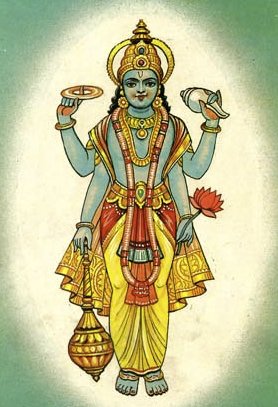
Vaishnava (वैष्णव, vaiṣṇava) or vaishnavism (vaiṣṇavism) represents a tradition of Hinduism worshipping Vishnu as the supreme Lord. Similar to the Shaktism and Shaivism traditions, Vaishnavism also developed as an individual movement, famous for its exposition of the dashavatara (‘ten avatars of Vishnu’).
Ganitashastra (Mathematics and Algebra)
Source: archive.org: Hindu MathematicsYukti (युक्ति, “addition”) is another name for Saṃklita (“addition”) which represents one of the twenty operations (logistics) of pāṭīgaṇita (“science of calculation which requires the use of writing material—the board”), according to Pṛthudakasvāmī’s commentary on the Brāhmasphuṭasiddhānta by Brahmagupta, a Sanskrit treatise on ancient Indian mathematics (gaṇita-śāstra) and astronomy from the 7th century.—The Hindu name for addition is saṃkalita (‘made together’). Other equivalent terms commonly used are [e.g., yoga (addition)] [...]. The word saṃkalita has been used by some writers in the general sense of the sum of a series.
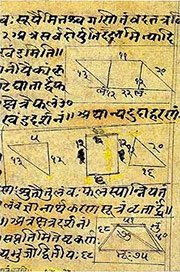
Ganitashastra (शिल्पशास्त्र, gaṇitaśāstra) refers to the ancient Indian science of mathematics, algebra, number theory, arithmetic, etc. Closely allied with astronomy, both were commonly taught and studied in universities, even since the 1st millennium BCE. Ganita-shastra also includes ritualistic math-books such as the Shulba-sutras.
General definition (in Hinduism)
Source: Wisdom Library: HinduismYoga means: to merge, join or unite; Yoga is a form of exercise based on the belief that the body and breath are intimately connected with the mind. Yoga is a means of balancing and harmonizing the body, mind and emotions and is a tool that allows us to withdraw from the chaos of the world and find a quiet space within. To achieve this, yoga uses movement, breath, posture, relaxation and meditation in order to establish a healthy, vibrant and balanced approach to living.
Source: Hindu Online: YogaThis word, derived from the root Yuj (“to join”), is in grammer samdhi, in logic avayavaśakti, or the power of the parts taken together and in its most widely known and present sense the union of the jīva or embodied spirit, with the Paramātmā, or Supreme Spirit, and the practices by which this union may be attained. There is a natural yoga, in which all beings are, for it is only by virtue of this identity in fact that they exist. Yoga is variously named according to the methods employed, but the two main divisions are those of the haṭhayoga (or ghaṭasthayoga) and samādhiyoga, of which rājayoga is one of the forms.
Source: WikiPedia: HinduismIn Vedic Sanskrit, the more commonly used, literal meaning of the Sanskrit word yoga which is "to add", "to join", "to unite", or "to attach" from the root yuj, already had a much more figurative sense, where the yoking or harnessing of oxen or horses takes on broader meanings such as "employment, use, application, performance" (compare the figurative uses of "to harness" as in "to put something to some use"). All further developments of the sense of this word are post-Vedic. More prosaic moods such as "exertion", "endeavour", "zeal" and "diligence" are also found in Epic Sanskrit. There are very many compound words containing yog in Sanskrit. Yoga can take on meanings such as "connection", "contact", "method", "application", "addition" and "performance".
In Hindu philosophy, the word yoga is used to refer to one of the six orthodox (āstika) schools of Hindu philosophy. The Yoga Sutras of Patanjali are often labelled as Rāja yoga.
Source: Red Zambala: On the Salvific Activities of GodYoga: A practical methodology attributed to sage Patañjali who taught that the means to liberation was eighth-fold — aṣṭāṅga. Four of the limbs apply to physical and moral development and the other four deal with meditation.
In Buddhism
Theravada (major branch of Buddhism)
Source: Pali Kanon: Manual of Buddhist Terms and DoctrinesYoga (“yokes”, “bonds”) is another name for the 4 cankers (āsava).
Source: Dhamma Study: CetasikasYogas (‘yokes’), consisting of four, are another group of defilements. The “yokes” tie a person to the cycle of birth and death.
The four yogas are:
- the yoke of sensuous desire, kamayogha,
- the yoke of desire for rebirth, bhavayogha,
- the yoke of wrong view, ditthiyogha,
- the yoke of ignorance, avijjayogha.
Theravāda is a major branch of Buddhism having the the Pali canon (tipitaka) as their canonical literature, which includes the vinaya-pitaka (monastic rules), the sutta-pitaka (Buddhist sermons) and the abhidhamma-pitaka (philosophy and psychology).
Tibetan Buddhism (Vajrayana or tantric Buddhism)
Source: archive.org: The Indian Buddhist IconographyYoga (योग) consists of a six-fold practice to be employed during in Uttamasevā (excellent worship), according to the Guhyasamāja chapter 18.—Uttamasevā represents one of the two types of Sevā (worship) which is the first of the four upāyas (“means”) through which the Sādhaka has to pass before the deity is realised and visualised according to the Guhyasamāja chapter 18.—In the Uttamasevā (excellent worship), Yoga with its six limbs should be employed.
The six limbs of this Yoga are:
- Pratyāhāra,
- Dhyāna,
- Pāṇāyāma,
- Dhāraṇā,
- Anusmṛti,
- Samādhi.
Yoga (योग) refers to the “combination (of fixed stars and planets)”, according to the Bhūśalyasūtrapātananimittavidhi section of Jagaddarpaṇa’s Ācāryakriyāsamuccaya, a text within Tantric Buddhism dealing with construction manual for monasteries etc.—Accordingly, “[...] The officiant with special knowledge of architecture who is skilled in the examination [of omens] should abandon inauspicious [, extraneous] things by all means. By doing this, fortune and auspiciousness will certainly be brought to the donor, the king, and all people who live in the region. [Therefore, the officiant] should first examine the [omens], and then undertake the rite [to follow] when the combination of fixed stars and planets (graha-yoga), and the day are auspicious. [...]”.
Source: OSU Press: Cakrasamvara Samadhi1) Yoga (योग, “meditation”) or Yogatantra refers to one of the divisions of Mahāyāna-Vajrayāna Buddhism, according to Buddhist teachings followed by the Newah in Nepal, Kathmandu Valley (whose roots can be traced to the Licchavi period, 300-879 CE).—Mahāyāna-Vajrayāna is commonly divided into four modes of practice, kriyā, "action", worshiping and serving a deity seen as outside oneself, caryā, "performance", embodying a deity by performing its ritual music and dance, yoga, "meditation", visualizing a deity or deities and absorbing them into oneself, and anuttarayoga, "the highest yoga", using sophisticated yogic meditation practices to actively turn oneself into an enlightened divinity. [...] Yoga and Anuttara Yoga Tantra both involve the visualization and meditative absorption of a deity or deities, and the deities' retinue and mandala (samādhi). In Yoga Tantra, the object of one's meditation is usually a single deity such as Avalokiteśvara, or Ārya Tārā, "Green Tārā", whose supernatural strength and speed helps devotees overcome obstacles.
2) Yoga (योग) refers to the “conjunction of the sun and moon” [i.e., yoge amuka], according to the Guru Mandala Worship (maṇḍalārcana) ritual often performed in combination with the Cakrasaṃvara Samādhi, which refers to the primary pūjā and sādhanā practice of Newah Mahāyāna-Vajrayāna Buddhists in Nepal.

Tibetan Buddhism includes schools such as Nyingma, Kadampa, Kagyu and Gelug. Their primary canon of literature is divided in two broad categories: The Kangyur, which consists of Buddha’s words, and the Tengyur, which includes commentaries from various sources. Esotericism and tantra techniques (vajrayāna) are collected indepently.
General definition (in Buddhism)
Source: Wisdom Library: BuddhismYoga:—A method of uniting body and mind into its ‘natural’ state.
In Jainism
Jain philosophy
Source: archive.org: Anekanta Jaya Pataka of Haribhadra SuriYoga (योग) refers to “activity”, as occurring in the Anekāntajayapatākā-prakaraṇa, a Śvetāmbara Jain philosophical work written by Haribhadra Sūri.—[Cf. Vol. I, P. 398, ll. 25-26]—‘Avirati’ means ‘ vowlessness’, ‘kasāya’ ‘passion and ‘yoga’ ‘activity’.
-
General definition (in Jainism)
Source: Wisdom Library: JainismYoga (योग) refers to “application / contemplation of mind” and is one of the causes leading to the influx (āsrana) of karmas extending pleasant feelings (sātāvedanīya).
Yoga is a Sanskrit technical term defined in the Tattvārthasūtra (ancient authorative Jain scripture) from the 2nd century, which contains aphorisms dealing with philosophy and the nature of reality.
Source: archive.org: TrisastisalakapurusacaritraYoga (योग) refers to “self-concentration”, according to chapter 4.5 [dharmanātha-caritra] of Hemacandra’s 11th century Triṣaṣṭiśalākāpuruṣacaritra: an ancient Sanskrit epic poem narrating the history and legends of sixty-three illustrious persons in Jainism.
Accordingly, as Dharma-nātha said in his sermon on the kaṣāyas:—“Emancipation (mokṣa) is the chief of the four objects of existence and the source of it is self-concentration (yoga), and it (yoga) is the three jewels having the form of jnana, śraddhāna, and caritra. Understanding in accordance with the Principles is jñāna; right-belief is saṃyakśraddhā; and abandonment of all censurable activities is caritra. The Soul alone—or rather, the right-belief, knowledge, and conduct of a yati, since it (the soul) really consists of them—rules the body. If anyone knows the soul in himself by himself because of the freedom from delusion, that itself is his right-conduct, -knowledge, and -belief. [...]”.
Source: Encyclopedia of Jainism: Tattvartha Sutra 6: Influx of karmas1) Yoga (योग, “activity”) according to the 2nd-century Tattvārthasūtra chapter 6, “the operation of the body (kāya), the organ of speech (vāc) and the mind (manas) is called yoga (activity).”.—What is meant by activity (yoga)? Vibrations caused in the space-points of the soul induced by mind, body and speech is called yoga /activity.
How many types of yoga are there? There are three types of yoga differentiated according to the nature of the cause namely:
- manoyoga (mind activities),
- vacanayoga (speech activities),
- kāyayoga (body activities).
According to verse 6.2, “It (vibrations caused by this threefold activity) is influx (āsrava)” Why are the activities (yoga) called influx? Since activities of the mind body and speech are the cause of the inflow of kārmaṇa and nokarma (gross body building) particles to establish a relation with the soul. So activities (yoga) are called influx. The function of yoga is to invite or initiate the influx of the kārma particles (matter particles capable of becoming karmas) towards the soul. The functions of passions are ‘to be the cause’ of kārma bondage with the soul and it’s ensure the same.
2) Yoga (योग).—What is meant by application/ contemplation of mind (yoga)? To observe the above activities i.e. (compassions for both general and devout), charity and self-control with attachment, with full application of mind and completely is yoga. Also yoga is said to be as performing flawless activities, meditation and samādhi with auspicious objectives
Source: Encyclopedia of Jainism: Tattvartha Sutra 2: the Category of the livingYoga (योग).—What is the meaning of yoga (activities) in Jainism? Activities of mind, body and speech resulting in the vibrations of the space-points of the soul are called yoga.
Source: Encyclopedia of Jainism: Tattvartha Sutra 8: Bondage of karmasYoga (योग, “activities”) refers to one of the five causes of bondage (bandha) according to the 2nd-century Tattvārthasūtra 8.1.—What is meant by activities (yoga)? Actions of mind, body and speech that cause vibrations of the space points of the soul are called activities. How many types of activities are there? These are of fifteen types namely: Mental and speech activities are of four types each (true, false, both true and false and neither true nor false), seven activities of the body (gross, gross mixed, celestial, celestial mixed, conveyance, conveyance mixed, karma and luminous).

Jainism is an Indian religion of Dharma whose doctrine revolves around harmlessness (ahimsa) towards every living being. The two major branches (Digambara and Svetambara) of Jainism stimulate self-control (or, shramana, ‘self-reliance’) and spiritual development through a path of peace for the soul to progess to the ultimate goal.
India history and geography
Source: Cologne Digital Sanskrit Dictionaries: Indian Epigraphical GlossaryYoga.—(CII 4), meditation; a philosophical system. (EI 18), a council or corporation. (CII 3; IA 17), addition of the longitudes of the sun and moon; an astrological element. Cf. yogaṃ yuñjantām, ‘let them obtain the association [of the gods]’. See Ep. Ind., Vol. XXXI, p. 208. Cf. yuj. Note: yoga is defined in the “Indian epigraphical glossary” as it can be found on ancient inscriptions commonly written in Sanskrit, Prakrit or Dravidian languages.
Source: Singhi Jain Series: Ratnaprabha-suri’s Kuvalayamala-katha (history)Yoga (योग) refers to one of the seventy-two arts and sixty-four sciences, being part of the Ancient Indian Education, as depicted in the Kathās (narrative poems) such as Uddyotanasūri in his 8th-century Kuvalayamālā (a Prakrit Campū, similar to Kāvya poetry).—Page 150.17 f. & 151.1-5: There is described an educational institution. [...] At another place (151.6-11) the prince came across persons who cultivated the seventy-two arts and sixty-four sciences, such as, [e.g., Yoga], [...].

The history of India traces the identification of countries, villages, towns and other regions of India, as well as mythology, zoology, royal dynasties, rulers, tribes, local festivities and traditions and regional languages. Ancient India enjoyed religious freedom and encourages the path of Dharma, a concept common to Buddhism, Hinduism, and Jainism.
Languages of India and abroad
Pali-English dictionary
Source: BuddhaSasana: Concise Pali-English Dictionaryyoga : (m.) connection; bond; endeavour; conjunction; attachment; effort; mixture.
Source: Sutta: The Pali Text Society's Pali-English DictionaryYoga, (Vedic yoga, see etym. under yuga & yuñjati. Usually m.; pl. nt. yogāni occurs at D. II, 274 in meaning “bonds”) lit. “yoking, or being yoked, ” i.e. connection, bond, means; fig. application, endeavour, device.—1. yoke, yoking (rare?) J. VI, 206 (meant here the yoke of the churning-sticks; cp. J. VI, 209).—2. con‹-› nection with (-°), application to; (natural) relation (i.e. body, living connection), association; also conjunction (of stars). mānusaka yoga the relation to the world of men (the human body), opp. dibba yoga: S. I, 35=60; Sn. 641; Dh. 417; explained at DhA. IV, 225 as “kāya. ” ‹-› association with: D. III, 176; application: Vism. 520 (+uppāda). yogato (Abl.) from being connected with, by association with PvA. 40 (bālya°), 98 (sammappadhāna°).—pubba° connection with a former body, one’s former action or life-history J. V, 476; VI, 480; Miln. 2. See pubbe1.—aḍḍhayoga a “half-connected” building, i.e. a half-roofed monastery Vin. I, 239; Vism. 34.—nakkhatta° a conjunction of planets, peculiar constellation (in astrology) J. I, 82, 253 (dhana-vassāpanaka suitable for a shower of wealth); III, 98; DhA. I, 174; DhsA. 232 (in simile).—3. (fig.) bond, tie; attachment (to the world and its lusts), or what yokes to rebirth (Cpd. 1712). There are 4 yogas, which are identical with the 4 oghas viz. kāma°, bhava°, diṭṭhi°, avijjā°, or the bonds of craving, existence, false views, and ignorance; enumerated in detail at A. II, 10; D. III, 230, 276; J. I, 374; cp. Ps. I, 129 (catūhi yogehi yutto lokasannivāso catu-yoga-yojito); VbhA. 35. Mentioned or referred to at S. V, 59; Dhs. 1059 (ogha+, in definition of taṇhā), cp, Dhs. translation 308; Nett 31 (with ogha), 114 (id.); as sabba- (or sabbe) yogā at Th. 2, 4; 76; S. I, 213; DhA. III, 233; severally at It. 95 (bhava-yoga-yutta āgāmī hoti, +kāma°); ogha+yoga: Pug. 21 (avijjā°); Vism. 211, 684; cp. also D. II, 274 (pāpima-yogāni the ties of the Evil one); It. 80 (yogā pamocenti bahujanaṃ).—4. application, endeavour, undertaking, effort DhA. III, 233, 234 (=samma-ppadhāna). yogaṃ karoti to make an effort, to strive after (Dat.) S. II, 131; A. II, 93 (āsavānaṃ khayāya y. karaṇīya); Miln. 35. yogaṃ āpajjati to show (earnest) endeavour, to be active S. III, 11 sq.; Vbh. 356 (attanā).—dhamma° one who is devoted to the Dhamma A. III, 355; yutta° (bent on, i.e. ) earnest in endeavour J. I, 65; yāca° given to making offerings: see yāca.—5. pondering (over), concentration, devotion M. I, 472; Dh. 209 (=yoniso manasikāra DhA. III, 275), 282 (same explanation at DhA. III, 421); Miln. 3; Vbh. 324 (yoga-vihitesu kamm’& sipp’—āyatanesu; VbhA. 410 explains: y. vuccati paññā;— perhaps better to above 4?).—6. (magic) power, influence, device, scheme J. VI, 212 (yoga-yogena practice of spells etc. =tāya tāya yuttiyā C.); PvA. 117 (combined with manta, ascribed to devas).—7. means, instrument, remedy J. I, 380 (vamana° an emetic); VI, 74 (ekaṃ yogaṃ datvā; but we better read bhesajjaṃ tassa datvā for vatvā, and ekaṃ yogaṃ vatvā for datvā; taking yoga in meaning of “charm, incantation”); Miln. 109 (yena yogena sattānaṃ guṇa-vaḍḍhi ... tena hitaṃ upadahati).

Pali is the language of the Tipiṭaka, which is the sacred canon of Theravāda Buddhism and contains much of the Buddha’s speech. Closeley related to Sanskrit, both languages are used interchangeably between religions.
Marathi-English dictionary
Source: DDSA: The Molesworth Marathi and English Dictionaryyōga (योग).—m (S) Junction, union, meeting, unitedness, mingledness; close connection, association, or combination in general. 2 Concatenation, conjunction, or consecutive disposition (of the affairs of the universe) as established by the Deity, and as swaying or regulating human concernments. Ex. tilā nahāṇa yāvēṃ āṇi ticā dādalā marāvā asā yōga hōtā. In this sense kālayōga, daivayōga, prārabdhayōga &c. 3 Spiritual or abstract devotion; union with Brahma through abstract meditation or contemplation: also the practice or exercise of this sort of worship; for which several attitudes or postures are prescribed. 4 A way, means, or expedient in general, although understood esp. as a way or means of attaining unto the fruition of Brahma. In this sense bhaktiyōga, karmayōga, jñānayōga &c. 5 The twenty-seventh part of a circle measured on the plane of the Ecliptic; and used in calculating the longitudes of the sun and moon. These 27 Yogas are named viṣkambha, prīti, āyu- ṣmān, saubhāgya, śōbhana, atigaṇḍa, sukarmā, dhṛti, śūla, gañja, vṛddhi, dhruva, vyāghāta, harṣaṇa, vajra, siddhi, vyatīpāta, varyāṇa, parīgha, śiva, siddhi, sādhya, śubha, śulka, brahmā, aindra, vaidhṛti. Astrologers also enumerate twenty-eight yōga differently named from the foregoing, and corresponding with the twenty-eight Nakshatras, but varying according to the day of the week. 6 Application or address; applying or addressing (of things to a use, of efforts to an object, of means in general to an end). 7 Propriety, fitness, suitableness, congruity. 8 In arithmetic. Sum or amount.
Source: DDSA: The Aryabhusan school dictionary, Marathi-Englishyōga (योग).—m Union. Concatenation. A means. Propriety. A term in Astronomy.
Marathi is an Indo-European language having over 70 million native speakers people in (predominantly) Maharashtra India. Marathi, like many other Indo-Aryan languages, evolved from early forms of Prakrit, which itself is a subset of Sanskrit, one of the most ancient languages of the world.
Sanskrit dictionary
Source: DDSA: The practical Sanskrit-English dictionaryYoga (योग).—[yuj bhāvādau ghañ kutvam]
1) Joining, uniting.
2) Union, junction, combination; उपरागान्ते शशिनः समुपगता रोहिणी योगम् (uparāgānte śaśinaḥ samupagatā rohiṇī yogam) Ś.7.22; गुणमहतां महते गुणाय योगः (guṇamahatāṃ mahate guṇāya yogaḥ) Kirātārjunīya 1.25; (vāṃ) योगस्तडित्तोयदयोरिवास्तु (yogastaḍittoyadayorivāstu) R.6.65.
3) Contact, touch, connection; तमङ्कमारोप्य शरीरयोगजैः सुखैर्निषिञ्चन्तमिवामृतं त्वचि (tamaṅkamāropya śarīrayogajaiḥ sukhairniṣiñcantamivāmṛtaṃ tvaci) R.3.26.
4) Employment, application, use; एतै- रुपाययोगैस्तु शक्यास्ताः परिरक्षितुम् (etai- rupāyayogaistu śakyāstāḥ parirakṣitum) Manusmṛti 9.1; R.1.86.
5) Mode, manner, course, means; ज्ञानविज्ञानयोगेन कर्मणा- मुद्धरन् जटाः (jñānavijñānayogena karmaṇā- muddharan jaṭāḥ) Bhāgavata 3.24.17; कथायोगेन बुध्यते (kathāyogena budhyate) H.1. 'In the course of conversation'.
6) Consequence, result; (mostly at the end of comp on in abl.); रक्षायोगादयमपि तपः प्रत्यहं संचिनोति (rakṣāyogādayamapi tapaḥ pratyahaṃ saṃcinoti) Ś.2.15; Kumārasambhava 7.55.
7) A yoke.
8) A conveyance, vehicle, carriage.
9) (a) An armour. (b) Putting on armour.
1) Fitness, propriety, suitableness.
11) An occupation, a work, business.
12) A trick, fraud, device; योगाधमनविक्रीतं योगदानप्रतिग्रहम् (yogādhamanavikrītaṃ yogadānapratigraham) Manusmṛti 8.165.
13) An expedient, plan, means in general.
14) Endeavour, zeal, diligence, assiduity; ज्ञानमेकस्थमाचार्ये ज्ञानं योगश्च पाण्डवे (jñānamekasthamācārye jñānaṃ yogaśca pāṇḍave) Mahābhārata (Bombay) 7.188.45. इन्द्रियाणां जये योगं समातिष्ठेद् दिवा- निशम् (indriyāṇāṃ jaye yogaṃ samātiṣṭhed divā- niśam) Manusmṛti 7.44.
15) Remedy, cure.
16) A charm, spell, incantation, magic, magical art; तथाख्यातविधानं च योगः संचार एव च (tathākhyātavidhānaṃ ca yogaḥ saṃcāra eva ca) Mahābhārata (Bombay) 12.59.48.
17) Gaining, acquiring, acquisition; बलस्य योगाय बलप्रधानम् (balasya yogāya balapradhānam) Rām.2.82.3.
18) The equipment of an army.
19) Fixing, putting on, practice; सत्येन रक्ष्यते धर्मो विद्या योगेन रक्ष्यते (satyena rakṣyate dharmo vidyā yogena rakṣyate) Mahābhārata (Bombay) 5.34. 39.
2) A side; an argument.
21) An occasion, opportunity.
22) Possibility, occurrence.
23) Wealth, substance.
24) A rule, precept.
25) Dependence, relation, regular order or connection, dependence of one word upon another.
26) Etymology or derivation of the meaning of a word.
27) The etymological meaning of a word (opp. rūḍhi); अवयवशक्तिर्योगः (avayavaśaktiryogaḥ).
28) Deep and abstract meditation, concentration of the mind, contemplation of the Supreme Spirit, which in Yoga phil. is defined as चित्तवृत्तिनिरोध (cittavṛttinirodha); स ब्रह्मयोगयुक्तात्मा सुखमक्षयमश्नुते (sa brahmayogayuktātmā sukhamakṣayamaśnute) Bhagavadgītā (Bombay) 5.21; सती सती योगविसृष्टदेहा (satī satī yogavisṛṣṭadehā) Kumārasambhava 1.21; V.1.1; योगेनान्ते तनुत्यजाम् (yogenānte tanutyajām) R.1.8.
29) The system of philosophy established by Patañjali, which is considered to be the second division of the Sāṃkhya philosophy, but is practically reckoned as a separate system; एकं सांख्यं च योगं च यः पश्यति स पश्यति (ekaṃ sāṃkhyaṃ ca yogaṃ ca yaḥ paśyati sa paśyati) Bhagavadgītā (Bombay) 5.5. (The chief aim of the Yoga philosophy is to teach the means by which the human soul may be completely united with the Supreme Spirit and thus secure absolution; and deep abstract meditation is laid down as the chief means of securing this end, elaborate rules being given for the proper practice of such Yoga or concentration of mind.)
3) A follower of the Yoga system of philosophy; जापकैस्तुल्यफलता योगानां नात्र संशयः (jāpakaistulyaphalatā yogānāṃ nātra saṃśayaḥ) Mahābhārata (Bombay) 12.2.23.
31) (In arith.) Addition.
32) (In astr.) Conjunction, lucky conjunction.
33) A combination of stars.
34) Name of a particular astronomical division of time (27 such Yogas are usually enumerated).
35) The principal star in a lunar mansion.
36) Devotion, pious seeking after god.
37) A spy, secret agent.
38) A traitor, a violator of truth or confidence.
39) An attack; योगमाज्ञापयामास शिकस्य विषयं प्रति (yogamājñāpayāmāsa śikasya viṣayaṃ prati) Śiva B.13.7.
4) Steady application; श्रुताद् हि प्रज्ञा, प्रज्ञया योगो योगादात्मवत्ता (śrutād hi prajñā, prajñayā yogo yogādātmavattā) Kau. A.1.5; मयि चानन्ययोगेन भक्तिरव्यभिचारिणी (mayi cānanyayogena bhaktiravyabhicāriṇī) Bhagavadgītā (Bombay) 13.1.
41) Ability, power; एतां विभूतिं योगं च मम यो वेत्ति तत्त्वतः (etāṃ vibhūtiṃ yogaṃ ca mama yo vetti tattvataḥ) Bhagavadgītā (Bombay) 1.7; पश्य मे योगमैश्वरम् (paśya me yogamaiśvaram) 11.8.
42) Equality, sameness; समत्वं योग उच्यते (samatvaṃ yoga ucyate) Bhagavadgītā (Bombay) 2.48.
Derivable forms: yogaḥ (योगः).
Source: Cologne Digital Sanskrit Dictionaries: Edgerton Buddhist Hybrid Sanskrit DictionaryYoga (योग).—m. (Pali id., [Pali Text Society’s Pali-English Dictionary] s.v. 3; not in Sanskrit), bond, tie, attachment (in Pali numbering 4, = the 4 ogha or āśrava): yogehi vuhyati bālo yogaṃ nudati paṇḍitaḥ, sarvayoga-asaṃyukto yogakṣemīti vuccati Mahāvastu iii.384.12—13 (verses); compare Pali Dhammapada (Pali) commentary 3.233.21—22; similarly, yogaiḥ samuhyate bālo yogāṃ nudati paṇḍitaḥ,…sarvayogāṃ pranudyeha sarvaduḥkhāt pramucyate Udānavarga xxix.49(39). See foll. items, also dharma-yoga, pūrva-yoga.
Source: Cologne Digital Sanskrit Dictionaries: Shabda-Sagara Sanskrit-English DictionaryYoga (योग).—m.
(-gaḥ) 1. Junction, joining, union. 2. Combination, association, meeting, conflux. 3. Religious and abstract meditation. 4. Keeping the body in a fixed posture. 5. Devotion, spiritual worship of God, or union with the Supreme Being by means of abstract contemplation; this does not necessarily imply an abandonment of the world or relinquishment of the usual observances of religion, but it involves internal indifference to objects of pleasure and pain, and utter disregard of the consequences or fruit of ceremonial rites. 6. The particular practice of the preceding sort of devotion, or the exercise of that abstraction by which union with God is supposed to be obtained; in the Gita it is described as sitting on Kuśa grass, with the body firm, the eyes fixed on the tip of the nose, and the mind intent on the Deity; in the Tantras a fanciful operation is prescribed, by which the vital spirit seated in the lower part of the body, and the etherial spirit placed in the head, are supposed to be brought into combination in the brain, when the devotee becomes united with Brahma. 7. The system of philosophy which treats of the union of the soul with Brah- Ma or God; it is the same as the Patanjali doctrine, and constitutes one of the six Darshanas or philosophical schools of the Hindus. 8. Magic, or the acquisition of supernatural powers by the mystical and magical worship of Siva and Durga especially. 9. Consequence, result, the main end or object of any thing or act. 10. Connection of one thing with another, as of cause with effect, predicate with subject, quality with substance, &c. 11. Acquisition of something not possessed before, accession of property or wealth; in grammar this application is assigned to any unusual construction of words or compounds, unauthorised by rule, but sanctioned by the authority that employs them. 12. A rule, an aphorism. 13. Propriety, fitness. 14. Side, part, cause or argument to be maintained or defended. 15. Thing, substance. 16. Wealth. 17. A drug, a medicament, especially a compound of various, ingredients. 18. Fraud, trick. 19. A logician. 20. A spy, an informer. 21. A violator of truth or confidence. 22. A conveyance, a carriage, a boat, &c. 23. A means, an expedient. 24. Armour. 25. Putting on armour. 26. Lucky conjuncture. 27. (In arithmetic,) Addition. 28. (In astronomy,) The leading or principal star of a lunar mansion. 29. The twenty-seventh part of 3600 of a great circle measured on the plane of the ecliptic, and used in calculating the longitudes of the sun and moon; each Yoga has a distinct name; astrologers also enumerate twenty-eight Yogas differently named from the foregoing, and corresponding with the twenty-eight Nakshatras, or the divisions of the moon’s path, but varying according to the day of the week. 30. A period, or the time during which the sum of the motions of the sun and moon amount to one Nakshatra, the mean duration of which is 23hs. 474 4444. E. yuj to join literally or figuratively, (as with God,) aff. ghañ .
Source: Cologne Digital Sanskrit Dictionaries: Benfey Sanskrit-English DictionaryYoga (योग).—i. e. yuj + a, m. 1. Junction, Bhāṣāp, 56; joining, union, [Vikramorvaśī, (ed. Bollensen.)] [distich] 23. 2. Putting to (horses),
Yoga (योग).—[masculine] yoking, harnessing, drive, yoke, team; fitting out (an. army), fixing (an arrow); setting to work, use, application; means, expedient, trick, stratagem, art, fraud, deceit, magic, charm; enterprise, work; union, combination, relation, contact with ([instrumental] ±saha or —°); conjunction (of stars); pursuit, acquisition, property; succession, order, fitness, propriety; effort, endeavour, zeal, attention; collection or concentration of the mind, meditation. contemplation, [Name] of a phil. system; etymology & etym. meaning of a word, grammatical construction, rule or aphorism ([grammar]). — Instr. & [ablative] in the right way, as is proper, according to, by means or in consequence of (—°).
Source: Cologne Digital Sanskrit Dictionaries: Aufrecht Catalogus CatalogorumYoga (योग) as mentioned in Aufrecht’s Catalogus Catalogorum:—pupil of Kṣemarāja: Paramārthasāraṭīkā.
Yoga has the following synonyms: Yogarāja.
Source: Cologne Digital Sanskrit Dictionaries: Monier-Williams Sanskrit-English Dictionary1) Yoga (योग):—[from yuj] a etc. See pp. 856, 858.
2) b m. (√1. yuj; ifc. f(ā). ) the act of yoking, joining, attaching, harnessing, putting to (of horses), [Ṛg-veda; Mahābhārata]
3) a yoke, team, vehicle, conveyance, [Śatapatha-brāhmaṇa; Kauśika-sūtra; Mahābhārata]
4) employment, use, application, performance, [Ṛg-veda] etc. etc.
5) equipping or arraying (of an army), [Mahābhārata]
6) fixing (of an arrow on the bow-string), [ib.]
7) putting on (of armour), [cf. Lexicographers, esp. such as amarasiṃha, halāyudha, hemacandra, etc.]
8) a remedy, cure, [Suśruta]
9) a means, expedient, device, way, manner, method, [Mahābhārata; Kāvya literature] etc.
10) a supernatural means, charm, incantation, magical art, [ib.]
11) a trick, stratagem, fraud, deceit, [Manu-smṛti; Kathāsaritsāgara] (cf. yoga-nanda)
12) undertaking, business, work, [Ṛg-veda; Atharva-veda; Taittirīya-saṃhitā]
13) acquisition, gain, profit, wealth, property, [ib.; Kauśika-sūtra; Mahābhārata]
14) occasion, opportunity, [Kāmandakīya-nītisāra; Mārkaṇḍeya-purāṇa]
15) any junction, union, combination, contact with ([instrumental case] with or without saha, or [compound]), [Mahābhārata; Kāvya literature] etc. (yogam √i, to agree, consent, acquiesce in anything, [Rāmāyaṇa])
16) mixing of various materials, mixture, [Mahābhārata; Rāmāyaṇa; Varāha-mihira’s Bṛhat-saṃhitā]
17) partaking of, possessing ([instrumental case] or [compound]), [Manu-smṛti; Rāmāyaṇa; Harivaṃśa]
18) connection, relation (yogāt, yogena and yoga-tas ifc. in consequence of, on account of, by reason of, according to, through), [Kātyāyana-śrauta-sūtra; Śvetāśvatara-upaniṣad; Manu-smṛti] etc.
19) putting together, arrangement, disposition, regular succession, [Kāṭhaka] [???]
20) fitting together, fitness, propriety, suitability (gena ind. and -tas ind. suitably, fitly, duly, in the right manner), [Mahābhārata; Kāvya literature] etc.
21) exertion, endeavour, zeal, diligence, industry, care, attention (yoga-tas ind. strenuously, assiduously; pūrṇena yogena, with all one’s powers, with overflowing zeal), [Manu-smṛti; Mahābhārata] etc.
22) application or concentration of the thoughts, abstract contemplation, meditation, ([especially]) self-concentration, abstract meditation and mental abstraction practised as a system (as taught by Patañjali and called the Yoga philosophy; it is the second of the two Sāṃkhya systems, its chief aim being to teach the means by which the human spirit may attain complete union with Īśvara or the Supreme Spirit; in the practice of self-concentration it is closely connected with Buddhism), [Upaniṣad; Mahābhārata; Kāvya literature] etc. ([Indian Wisdom, by Sir M. Monier-Williams 92])
23) any simple act or rite conducive to Yoga or abstract meditation, [Sarvadarśana-saṃgraha]
24) Yoga personified (as the son of Dharma and Kriyā), [Bhāgavata-purāṇa]
25) a follower of the Yoga system, [Mahābhārata; Śaṃkarācārya]
26) (in Sāṃkhya) the union of soul with matter (one of the 10 Mūlikārthās or radical facts), [Tattvasamāsa]
27) (with Pāśupatas) the union of the individual soul with the universal soul, [Kulārṇava-tantra]
28) (with Pāñcarātras) devotion, pious seeking after God, [Sarvadarśana-saṃgraha]
29) (with Jainas) contact or mixing with the outer world, [ib.]
30) (in [astronomy]) conjunction, lucky conjuncture, [Lāṭyāyana; Varāha-mihira’s Bṛhat-saṃhitā; Mahābhārata] etc.
31) a constellation, asterism (these, with the moon, are called cāndra-yogāḥ and are 13 in number; without the moon they are called kha-yogāḥ, or nābhasa-yogāḥ), [Varāha-mihira’s Bṛhat-saṃhitā]
32) the leading or principal star of a lunar asterism, [Horace H. Wilson]
33) Name of a variable division of time (during which the joint motion in longitude of the sun and moon amounts to 13 degrees 20 minutes; there are 27 such Yogas beginning with Viṣkambha and ending with Vaidhṛti), [ib.]
34) (in [arithmetic]) addition, sum, total, [Sūryasiddhānta; Mahābhārata]
35) (in gram.) the connection of words together, syntactical dependence of a word, construction, [Nirukta, by Yāska; Suśruta] (ifc. = dependent on, ruled by, [Pāṇini 2-2, 8], [vArttika] 1)
36) a combined or concentrated grammatical rule or aphorism, [Pāṇini [Scholiast or Commentator]; Siddhānta-kaumudī] (cf. yoga-vibhāga)
37) the connection of a word with its root, original or etymological meaning (as opp. to rūḍhi q.v.), [Nirukta, by Yāska; Pratāparudrīya; Kātyāyana-śrauta-sūtra [Scholiast or Commentator]]
38) a violator of confidence, spy, [cf. Lexicographers, esp. such as amarasiṃha, halāyudha, hemacandra, etc.]
39) Name of a [Scholiast or Commentator] on the Paramārthasāra
40) Yogā (योगा):—[from yoga] f. Name of a Śakti, [Pañcarātra]
41) [v.s. ...] of Pīvarī (daughter of the Pitṛs called Barhiṣads), [Harivaṃśa]
Source: Cologne Digital Sanskrit Dictionaries: Yates Sanskrit-English DictionaryYoga (योग):—(gaḥ) 1. m. Junction; meeting; abstraction of mind, devotion; manner of performing it; fitness.
Source: DDSA: Paia-sadda-mahannavo; a comprehensive Prakrit Hindi dictionary (S)Yoga (योग) in the Sanskrit language is related to the Prakrit word: Joga.
[Sanskrit to German]
Sanskrit, also spelled संस्कृतम् (saṃskṛtam), is an ancient language of India commonly seen as the grandmother of the Indo-European language family (even English!). Closely allied with Prakrit and Pali, Sanskrit is more exhaustive in both grammar and terms and has the most extensive collection of literature in the world, greatly surpassing its sister-languages Greek and Latin.
Hindi dictionary
Source: DDSA: A practical Hindi-English dictionaryYoga (योग) [Also spelled yog]:—(nm) total, sum total; recipe; combination; addition; joining together; conjugation; mixture; contribution; a system of concentration and meditation, concentrational exercise; means of salvation, union with the Universal Soul by means of contemplation; one of the six schools of Indian philosophy; an auspicious or opportune moment; opportunity; device; -[kṣema] welfare, well-being; -[darśana] Yogic philosophy; ~[dāna] contribution; -[nidrā] Lord Vishnu's long-lasting sleep after the annihilation of the world; ~[phala] total, the sum total, sum; -[bala] power of [yoga] moral power derived through continuous meditation, concentration and contemplation; ~[bhraṣṭa] one who has aberrated/astrayed/deviated from [yoga; ~rūḍhi] a compound word used in a much more restricted sense as compared with the direct meaning of its components; ~[vid] well-versed in [yoga] (meditative contemplation, etc.); —[śakti] see -[bala; śāstra] the famous treatise on [yoga] by the sage Patanjali; one of the six schools of Indian philosophy; ~[śāstrī] well-versed in ~[śāstra; sūtra] the collection; of Sutras on [yoga] composed by the sage Patanjali; ~[stha] absorbed in [yoga] or meditative contemplation.
...
Kannada-English dictionary
Source: Alar: Kannada-English corpusYōga (ಯೋಗ):—
1) [noun] the act or process of joining, uniting together.
2) [noun] the fastening of a horse, ox, etc. to the yoke of a cart, plough, etc. with a cord; harness.
3) [noun] the fact of being associated; association.
4) [noun] the state of (various ingredients) being mixed; a mixture.
5) [noun] an act of arranging; state of being arranged; arrangement.
6) [noun] an orderly and stretegic grouping of troops of soldiers; an array.
7) [noun] the way a thing happens, happened or to be made; manner.
8) [noun] that by which something is done or obtained; a means.
9) [noun] a wooden crosspiece fastened over the necks of two oxen etc. and attached to the plough or a cart to be pulled; a yoke.
10) [noun] a piece of work assigned to or demanded of a person; a task.
11) [noun] a carrying out, doing, producing, etc.; execution.
12) [noun] the quality of being proper, fitting or suitable; fitness; propriety.
13) [noun] available resources or wealth.
14) [noun] good luck, success, prosperity, etc. supposed to be got by the grace of a deity; fortune.
15) [noun] favourable chance or opening offered by circumstances; an opportunity.
16) [noun] an action or device designed to deceive, cheat; a trick.
17) [noun] the physical body of a person or animal.
18) [noun] any substance used in curing disease, healing wounds, relieving pain, etc.; a medicine.
19) [noun] a person who secretly collects and reports information for a government, company, etc.; a spy.
20) [noun] a good, ideal quality, trait or behaviour.
21) [noun] mystical power used in bringing about superhuman acts.
22) [noun] one of the six ancient systems or schools of Indian philosophy.
23) [noun] self-concentration, abstract meditation and mental abstraction practised as a system.
24) [noun] the union of an individual soul with the Supreme Soul; the final Emancipaltion.
25) [noun] (gram.) the literary meaning of a word, that is not joined with any inflections.
26) [noun] (jain.) the relation or attachment the soul has with the mundane world.
27) [noun] (astrol.) the combination or conjugation of astrological planets at the time of one’s birth.
28) [noun] the act or process of adding two or more numbers to get the sum; addition.
Kannada is a Dravidian language (as opposed to the Indo-European language family) mainly spoken in the southwestern region of India.
See also (Relevant definitions)
Starts with (+465): Path of yoga, Yoga Sutra, Yoga Sutta, Yoga-pattaka, Yoga-sadhnu, Yoga-vasishtha, Yogabadari, Yogabahula, Yogabala, Yogabhadra, Yogabhaga, Yogabharaka, Yogabhashya, Yogabhashyakrama, Yogabhaskara, Yogabhavana, Yogabhipanna, Yogabhrashta, Yogabhyas, Yogabhyasa.
Ends with (+1338): Abdaprayoga, Abdapurtiprayoga, Abhagnayoga, Abhavadabhavanmatayoga, Abhavanmatayoga, Abhavatsamyoga, Abhijitayoga, Abhiniyoga, Abhisamyoga, Abhishekaprayoga, Abhiyoga, Abhyasaniyoga, Abhyasayoga, Achavakaprayoga, Adbhutayoga, Addhayoga, Adhanahautraprayoga, Adhanapancakaprayoga, Adhanaprayoga, Adhanavidhiprayoga.
Full-text (+8360): Yogasana, Rajayoga, Yogi, Yogas, Dhyanayoga, Yogashastra, Yogapatni, Yogacara, Joga, Yogavid, Priti, Yogavahin, Yoku, Patanjala, Yaugaka, Adhyatmayoga, Kurukshetrin, Yogabindutippana, Yogapraveshavidhi, Yogacintamani.
Relevant text
Search found 269 books and stories containing Yoga, Yogā, Yōga; (plurals include: Yogas, Yogās, Yōgas). You can also click to the full overview containing English textual excerpts. Below are direct links for the most relevant articles:
Yogadrstisamuccaya of Haribhadra Suri (Study) (by Riddhi J. Shah)
Chapter 3.4 - The Threefold Yoga < [Chapter 3 - Introduction to the Yogadṛṣṭisamuccaya]
Chapter 1.9 - Glory of Yoga in Jainism < [Chapter 1 - The Jain Yoga Tradition—A Historical Review]
Chapter 3.1 - Yogadṛṣṭisamuccaya (Benedictory Verse) < [Chapter 3 - Introduction to the Yogadṛṣṭisamuccaya]
Shrimad Bhagavad-gita (by Narayana Gosvami)
Verse 6.2 < [Chapter 6 - Dhyāna-yoga (Yoga through the Path of Meditation)]
Verse 5.5 < [Chapter 5 - Karma-sannyāsa-yoga (Yoga through Renunciation of Action)]
Verse 10.7 < [Chapter 10 - Vibhūti-yoga (appreciating the opulences of the Supreme Lord)]
Garga Samhita (English) (by Danavir Goswami)
Verse 5.24.67 < [Chapter 24 - The Killing of the Kola Demon]
Verse 2.9.10 < [Chapter 9 - Brahmā’s Prayers]
Verse 2.9.6 < [Chapter 9 - Brahmā’s Prayers]
A Manual of Abhidhamma (by Nārada Thera)
Introductory Verse < [Chapter VII - Abhidhamma Categories]
Sahitya-kaumudi by Baladeva Vidyabhushana (by Gaurapada Dāsa)
Text 8.23 < [Chapter 8 - Literary Qualities]
Text 5.16 < [Chapter 5 - Second-rate Poetry]
Text 2.10 < [Chapter 2 - The Natures of Words (śabda)]
Srila Gurudeva (The Supreme Treasure) (by Swami Bhaktivedanta Madhava Maharaja)
Gurudeva gives everything... < [Chapter 2.12 - Early ISKCON Conversations with Śrīla Gurudeva]
The Sampradaya (disciplic succession) < [Chapter 1.1 - Śrī Guru Tattva and Śrī Guru Sevaka]
Life before joining the Maṭha < [Chapter 1.2 - Śrīla Gurudeva’s Pūrvāśrama]
Related products
(+36 more products available)
